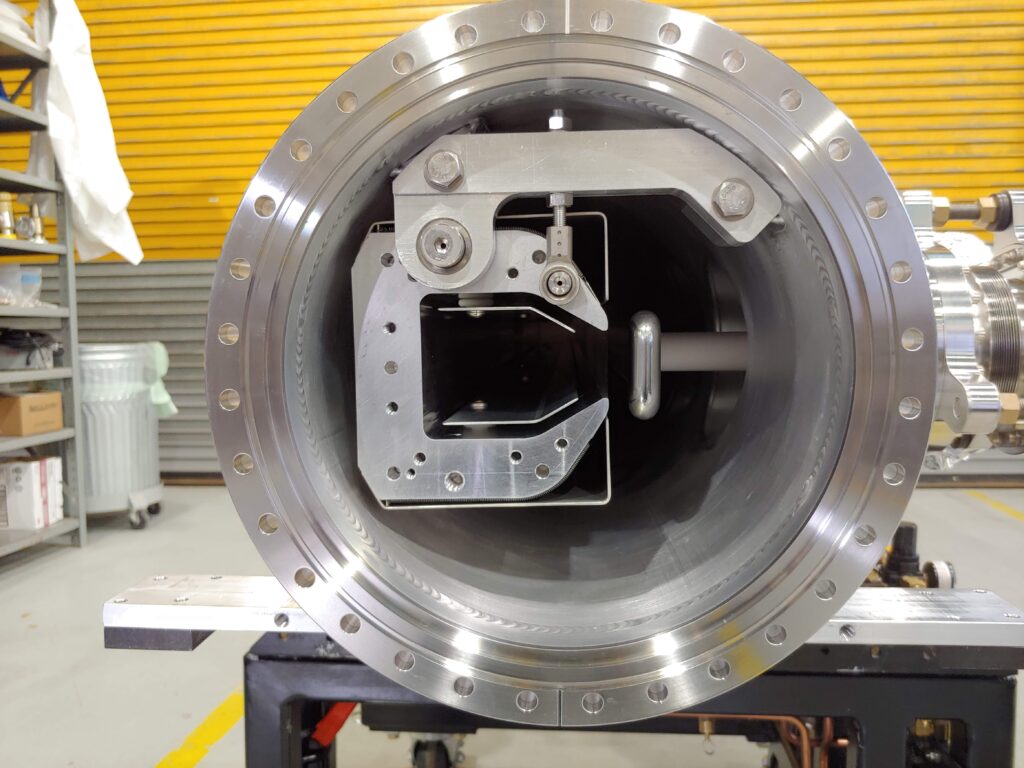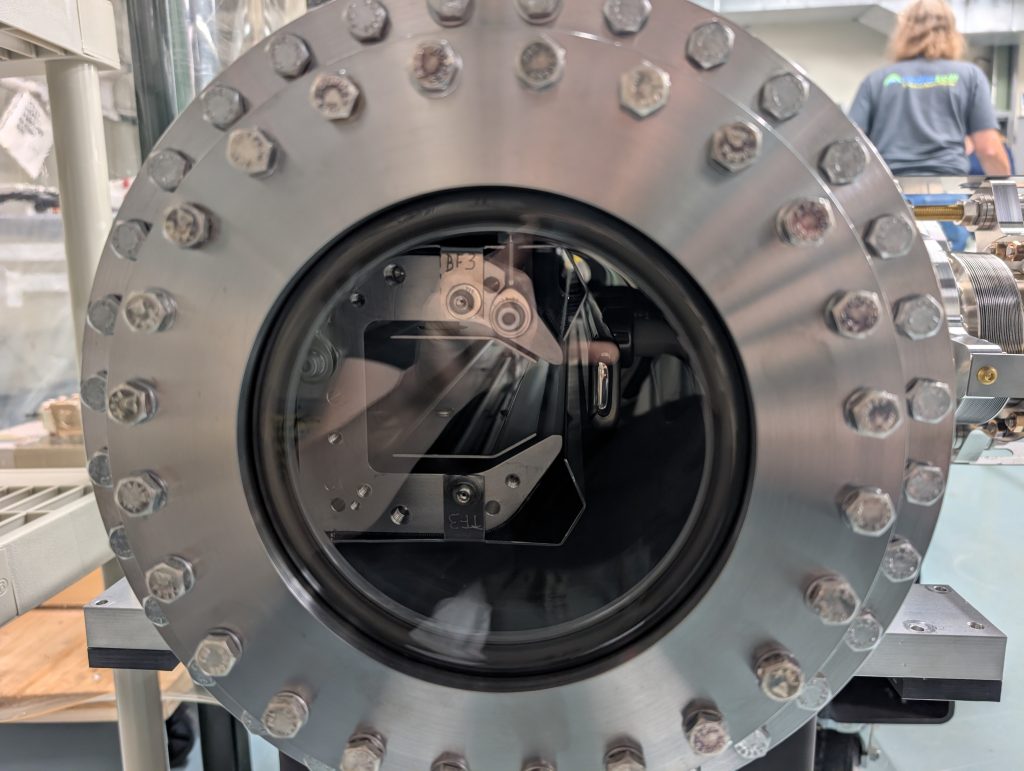

Septa are particle accelerator beamline devices that use the electric field generated by a high voltage cathode to steer protons from one beamline into another. At Fermilab most septum cathodes are held at around -100,000V under standard operation. Even though the septum operates in a vacuum, designing the device to allow the cathode to reach such a high voltage without generating sparks is a challenging task to say the least.
During the commissioning of the prototype Mu2e septum, sparking, assumed to be caused by high peak fields in certain areas, was preventing the cathode voltage from exceeding much more than -30kV. When sparking occurs inside a septum, it not only prevents the voltage from reaching optimal levels, but also damages components within the device from the arc forces the sparks generate. This damage can cause additional sparking, further worsening septum performance.
To help resolve the issue I carried out electrostatic simulations using CST Studio Suite to look for areas with high field concentrations. By performing rough simulations to determine the sensitivity of the peak fields to specific geometry changes I was able to efficiently determine what design changes would be most effective to improve septa performance. After testing over a dozen different geometry variations, I made several recommendations that simulations showed could reduce peak field values by over 40%. My recommendations were integrated into the Mu2e septum design and will be included in all future production septa.

